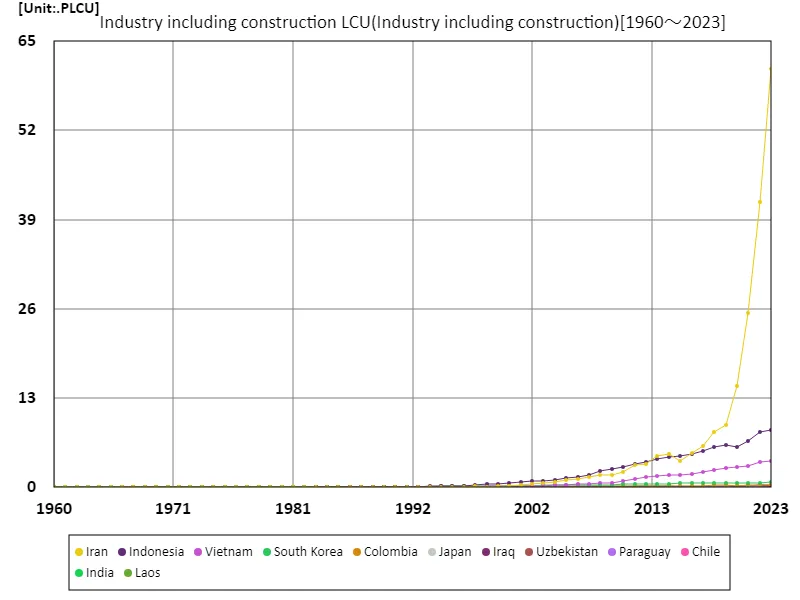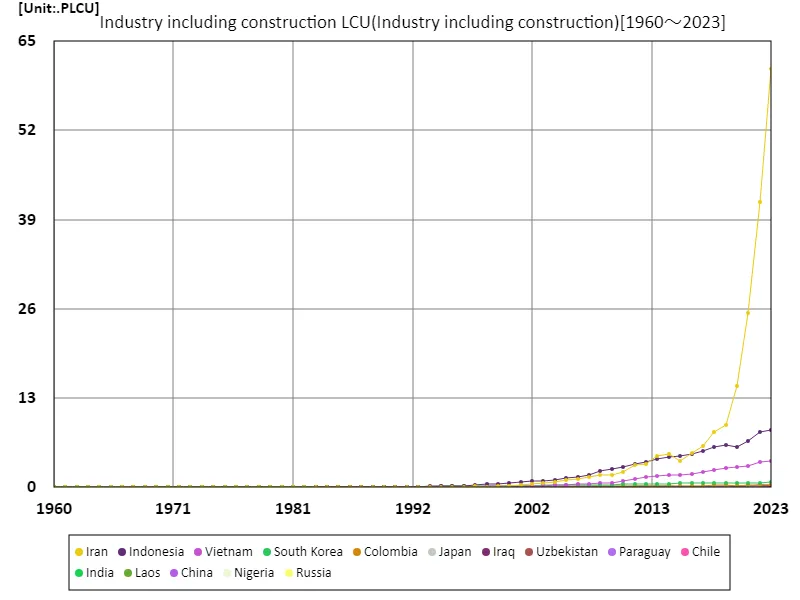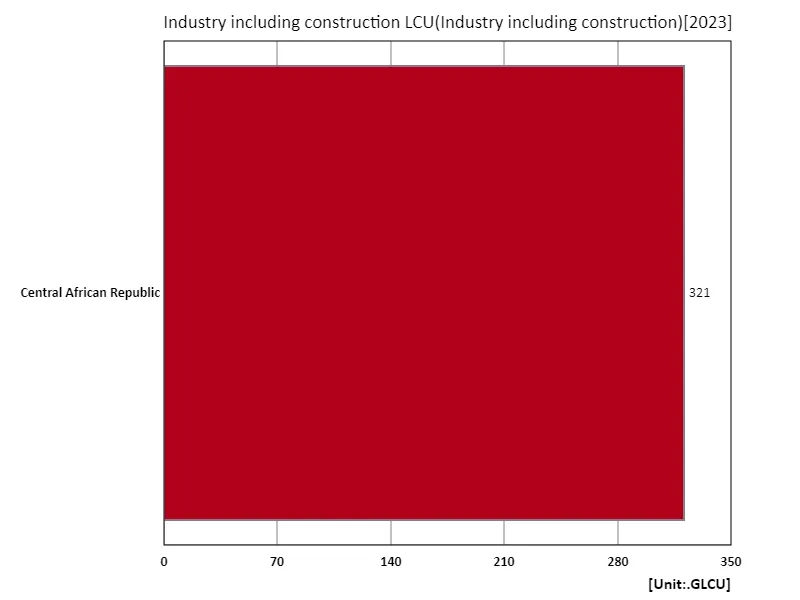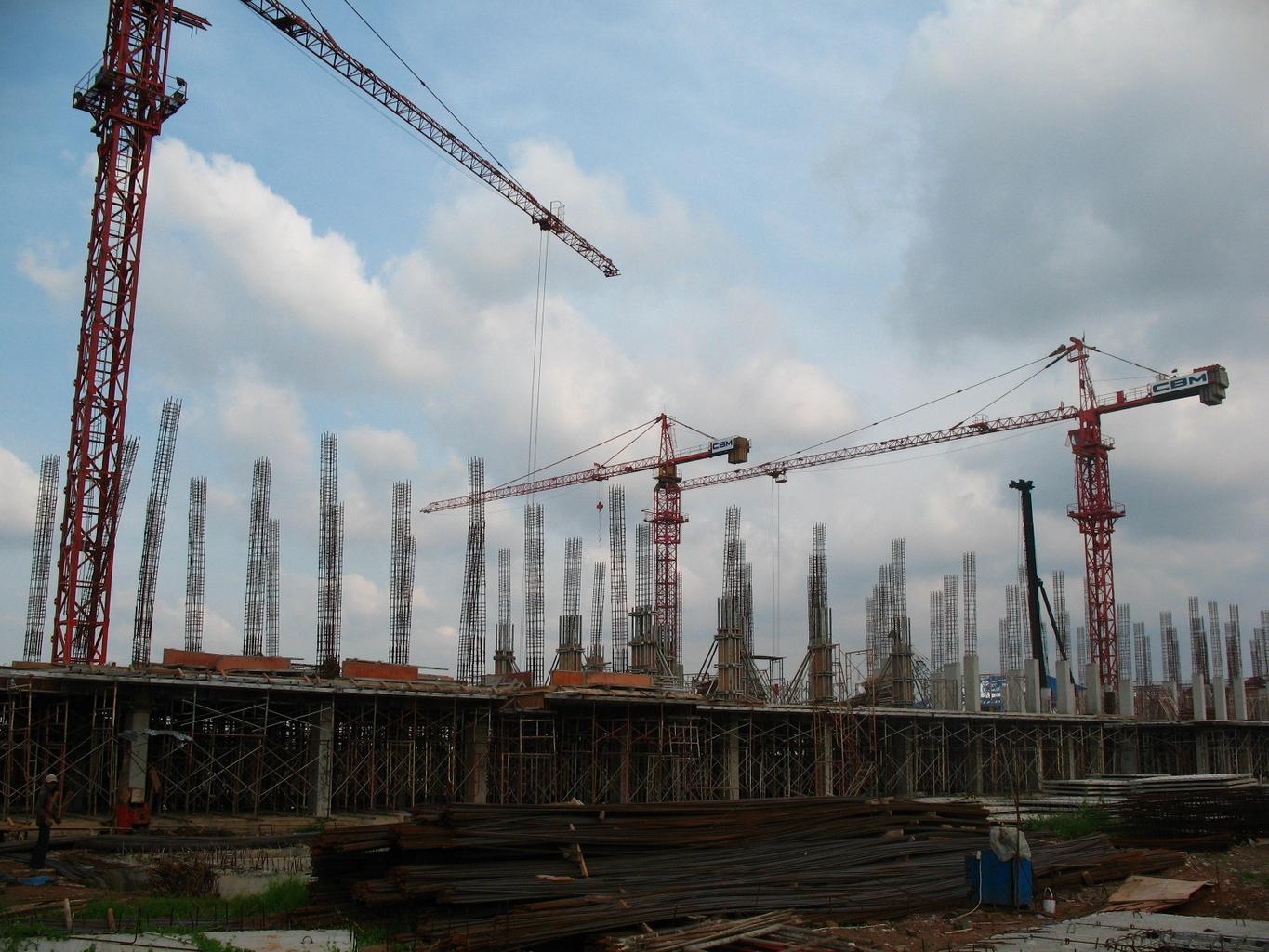Abstract
Value added of production in the world economy is a key factor, especially in industries including construction. According to data for 2023, Iran will have the largest production value added, which will reach 60.9 plcu. This is an important indicator of domestic economic activity and industrial growth, and reflects the large role of the construction industry in the country’s gross domestic product (GDP). The construction industry is a sector that directly contributes to national development through infrastructure development and housing construction, and the high added value of its production shows a close relationship with economic growth. Similar trends are seen in other regions and countries and are influenced by differences in industrial structure and economic policies. Given the diversity of economies, comparing the value added of production is an important indicator for understanding trends in economic growth across countries and regions.
Industry including construction, local currency
From 1960 to 2023, the added value of industrial production, including agriculture, forestry, fishing and construction, has shown diverse fluctuations. Iran’s projected maximum figure of 60.9 plcu in 2023, 100% compared to its peak, is a remarkable testament to the country’s economic growth. The figures suggest that Iran’s agriculture, forestry, fishing and construction industries have made particularly large contributions in recent years. Looking back at data from the 1960s, agriculture, forestry, and fisheries have primarily played the role of primary industries, while the construction industry has contributed to economic growth as an important part of infrastructure development. In particular, from the 1970s to the 1980s, the growth of the construction industry was remarkable, especially in developing countries, but since the 1990s, the growth of the service and manufacturing industries has attracted more attention. The case of Iran shows that despite being affected by changes in industrial structure and economic policies, agriculture, forestry, fishing and construction remain important economic sectors. In particular, in recent years, progress in resource management and urbanization has boosted the added value of these industries, and it can be said that their importance is increasing along with the diversification of the economy.


The maximum is the latest one, 60.9PLCU of Iran
Industry including construction, local currency (worldwide)
Industrial growth, including the construction industry, has undergone significant transformation between 1960 and 2023. Particularly in the recent case of Iran, it is expected to achieve a record production added value of 60.9plcu in 2023, which is 100% compared to its peak. This indicates the high importance and growth of the construction industry in Iran. Looking at trends over the past few decades, the construction industry has played a key role in driving economic growth. Particularly in developing countries, demand for infrastructure development and housing construction is increasing, making the construction industry a major source of employment in the overall economy. On the other hand, in developed countries, the construction industry is being called upon to evolve from the perspective of technological innovation and sustainability. Iran’s achievements in 2023 are likely to be due to the effectiveness of its economic policies, increased domestic and foreign investment, and the maturation of the domestic market. This has enabled Iran to strengthen its economic base and create synergies with other industries. The construction industry is a sector that is expected to continue to grow, and its sustainable development will be a factor in maintaining its influence on the local and global economies.


The maximum is the latest one, 60.9PLCU of Iran
Industry including construction, local currency (nations around the world, latest year)
Economic data from industries, including the construction sector, show Iran’s notable achievements in 2023. Iran achieved a record production value added of 60.9plcu, well above the global average of 499tlcu. This indicates that Iran is experiencing significant growth in the construction industry and establishing itself as a key pillar of the national economy. The construction industry supports a large part of domestic demand in terms of infrastructure development and housing construction, and is a major driver of economic growth, especially in developing countries. Iran’s growth can be attributed to domestic and foreign investment, the effectiveness of government economic policies, and the introduction of technological innovations. On the other hand, as the overall average is 499 tlcu, the construction industry plays an important role in economic activity worldwide, but growth rates and market sizes vary depending on each country’s economic situation and political factors. To achieve sustainable development, we must also address challenges such as promoting technological innovation and efficiency, as well as managing the environmental burden. The growth of the construction industry not only revitalizes the local economy, but also contributes to job creation and improving living standards. As the industry as a whole is expected to continue to develop healthily in the future, appropriate adjustments in economic policies and innovation in the industrial sector will be key.


The maximum is 60.9PLCU of Iran, the average is 503TLCU, and the total is 75.9PLCU
Industry including construction, local currency (region, latest year)
Economic data from industries including agriculture, forestry, fishing and construction point to notable results for the Central African Republic in 2023. The country achieved a record production value added of 321 glcu, which is in line with the global average of 321 glcu. The figures highlight the Central African Republic’s important developments in industries such as agriculture and construction. Agriculture in particular plays a vital role in the Central African Republic’s economy, contributing to the country’s food supply and creating jobs. In addition, the construction industry supports national development through infrastructure development and housing construction, providing the foundation for economic growth. The growth of these industries is increasing the country’s self-sufficiency and expanding its economic influence in international markets. On the other hand, the Central African Republic’s economy is still small compared to the rest of the world, as can be seen from the overall average of 321 glcu. As we strive for economic diversification and sustainable development, technological innovation and improved infrastructure development are key issues. The Central African Republic’s success story has much to teach other developing countries. In particular, technological innovation in resource management and agriculture, as well as the promotion of international economic cooperation, will be important factors for future growth.


The maximum is 321GLCU of Central African Republic, the average is 321GLCU, and the total is 321GLCU



Comments